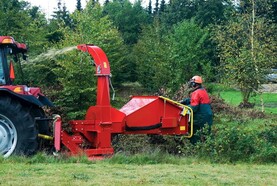The sharp increase in the cost of materials and in particular posts approved for use in fencing jobs grant aided under the Targeted Agricultural Modernisation Scheme (TAMS) is leading to reports of more farmers questioning whether to progress with or without TAMS funding.
The last time reference costs were updated for sheep fencing was February 2023 with many farmers commenting that costs are out of kilter and especially where a fencing contractor is erecting the fence. The reference cost for lowland fencing is €6.75/linear metre (m) for fencing on lowland lands and €8.81/m on mountain terrain. While bovine fencing has a reference cost of €2.77/m.
These costs are exclusive of VAT and grant aid will be based on the lower of reference costs or receipted costs. When deciding whether to go with or without TAMS funding it is important to analyse fairly. There is often a tendency to cut corners where erecting a non-TAMS fence while if using timber posts that don’t have a 15 year plus lifetime guarantee they will cost up to 50% less than posts with a longer lifetime guarantee. The same can be said of the gauge of wire used.
Fencing specifications
The minimum specifications for fencing are covered in the specification document S148 Farm Fencing – July 2024. For bovine fencing one or two strands of 2.5mm high-tensile wire should be used with line wires strained tightly between straining posts. The top row of wire must be erected 1.1m above ground level and where a second wire is installed this must be 600mm above ground level.
The height of strainer posts must be at least 2.1m (7ft) long and a minimum diameter of 175mm (7in). These must be driven at least 900mm (3ft) into the ground. Strainer posts must be erected at the beginning and end of every length of fencing, including gaps and openings, and a post must be erected where there is a change of direction of greater than 30 degrees. The typical maximum distance between such posts is 150m but this can be extended to 500m in the case of straight long runs free of ‘undulations’.
H-frames or straining frames may be used in place of straining posts where ground conditions prevent strainer posts from being properly placed. It may be also necessary in soft ground to extend the length of the straining post to achieve the necessary stability.
The intermediate posts, i.e. those between straining posts, must be at least 1.8m (6ft) long and a minimum of 100mm (4”) in diameter. These must be driven at least 500mm into the ground. The maximum spacing is 12m intervals.
Concrete, steel and plastic strainers / intermediate posts can also be used. Such materials must be included in the Department of Agriculture’s S148A – Accepted Fencing Posts listing.
Sheep fencing
The minimum requirements for straining posts for sheep fencing are similar to those mentioned above in bovine fencing. Intermediate posts must be the same length and thickness but driven 600mm into the ground.
The interval between posts is also more than halved to a maximum of 5m. For fencing with sheep wire and one strand of wire the fence shall have a minimum height of 1m. The lowest line of sheep wire shall be between 500mm and 100mm above ground level.
The mesh sheep wire should be constructed of high-tensile wire (IS EN 10223-5) with a minimum diameter of 2.5mm, eight horizontal wires and 800mm high.
The difference between lowland and mountain fencing relates to the terrain with the higher reference cost to cover increased labour. The site for fencing must be inaccessible to a tractor or equivalent and the movement of fencing material only possible by means of a track machine, an all-terrain vehicle (ATV) or man / animal power.
Gateways
Gateways are also eligible for grant aid at a reference cost of €364.01/gateway section. Gates must be a minimum width of 3m, rising to 3.6m where used as an entrance from a public road, and be a minimum of 1.9m in height. Gates must be at least medium-duty type and constructed either of galvanised steel or fully treated timber.






 This is a subscriber-only article
This is a subscriber-only article










SHARING OPTIONS: